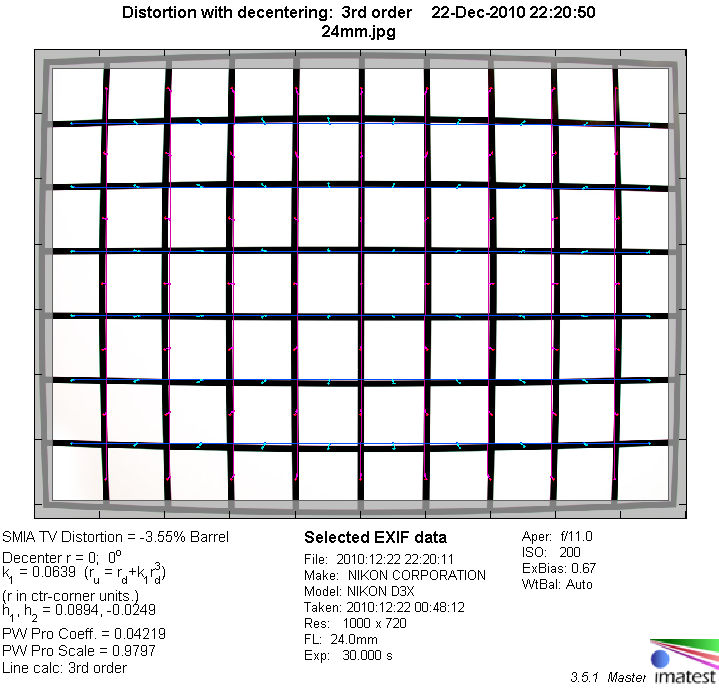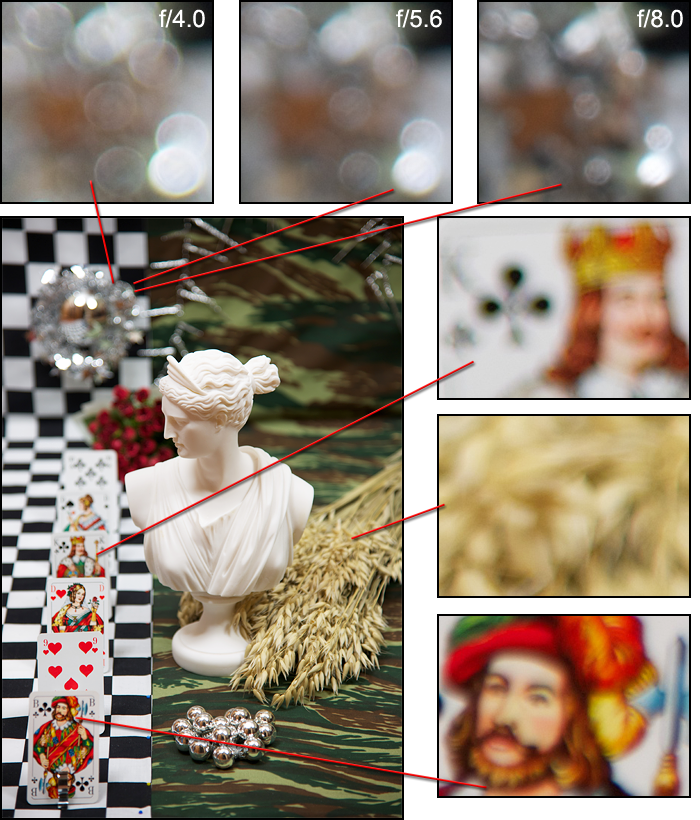|
Page 2 of 3

Distortion
Standard zooms going down to 24mm often show pronounced barrel distortion at this focal length and the 24-120/4 VR is no exception to this rule. Straight lines are visibly bent in the rendered image.
At other focal lengths, the situation isn't really much better. Distortion switches over to the pincushion type at 35mm and is moderate at this setting. From 50mm onwards though the amount of pincushion distortion is rather hefty for a lens in this class.
The good news is that at any focal length distortion is uniform and can easily be corrected by software in post processing (at the expense of resolution and a little field of view, of course).
|
Move the mouse cursor over the focal length text marks below to observe the respective distortion
|
| 24mm |
35mm |
50mm |
85mm |
120mm |
|

|
The chart above has a real-world size of about 120x80cm.
Vignetting
Except at 35 and 50 mm, the light falloff towards the corners is a little on the high side. This is especially true for the short end (24 mm), where the amount of vignetting stays on a rather high level even when stopped down. At 85 and 120 mm, this is also true for a wide open aperture, however stopping down helps to reduce the corner darkening to a level that is no longer field-relevant.
We're performing our vignetting analysis based on
(uncorrected) JPEGs straight from the camera. The JPG engine of the Nikon D3x features a rather flat
gradation curve, thus has a moderate contrast characteristic, resulting in comparatively low vignetting figures - the
corresponding Canon figures are roughly 40% higher due to the more
aggressive default contrast setting.

MTF (resolution)
Let's start with the good news: the center resolution is excellent wide open already at 24, 35 and 50 mm. Borders and corners follow a good bit behind wide open, but manage to catch up mostly stopped down, offering very good sharpness at f/5.6 or f/8. At 24mm though, they are on the lower end of the "very good" part of our rating scale.
At 85 mm, the center resolution drops wide open, but still reaches excellent figures stopped down. The lens needs to be stopped down to reach very good sharpness at borders and in corners at this focal length.
At its longest setting, the lens' resolution drops significantly. The image center shows very good sharpness throughout the aperture range, even scratching the "excellent" scaling at f/5.6. However, both borders and corners lack sharpness at 120 mm, reaching only good values even stopped down.
Please note that the MTF results are not directly comparable across the different systems!
Below is a simplified summary of the formal findings. The chart shows line widths
per picture height (LW/PH) which can be taken as a measure for sharpness.
If you want to know more about the MTF50 figures you may check out the corresponding
Imatest Explanations

Chromatic Aberrations (CAs)
Chromatic aberrations (color shadows at harsh contrast transitions) are rather high at most focal lengths and aperture settings.
However, CAs can easily be corrected in software or by the camera itself (most modern Nikon DSLRs remove CAs themselves if you shoot JPGs).

Bokeh
The quality of the bokeh (out-of-focus blur) is certainly not a primary aspect of a f/4 standard zoom. However, since the lens zooms up to 120mm and offers some potential to separate the main subject from the background on FX, we had a brief look at the bokeh at this focal length.
The bokeh in front of the focal plane is very smooth. However, in real life, this is probably almost completely irrelevant.
Thanks to 9 rounded aperture blades, background highlights retain their circular shape throughout the whole aperture range. Unfortunately they show a fair amount of outlining wide open, resulting in some nervousness. This is also visible in the crops from the transition zone below.

|